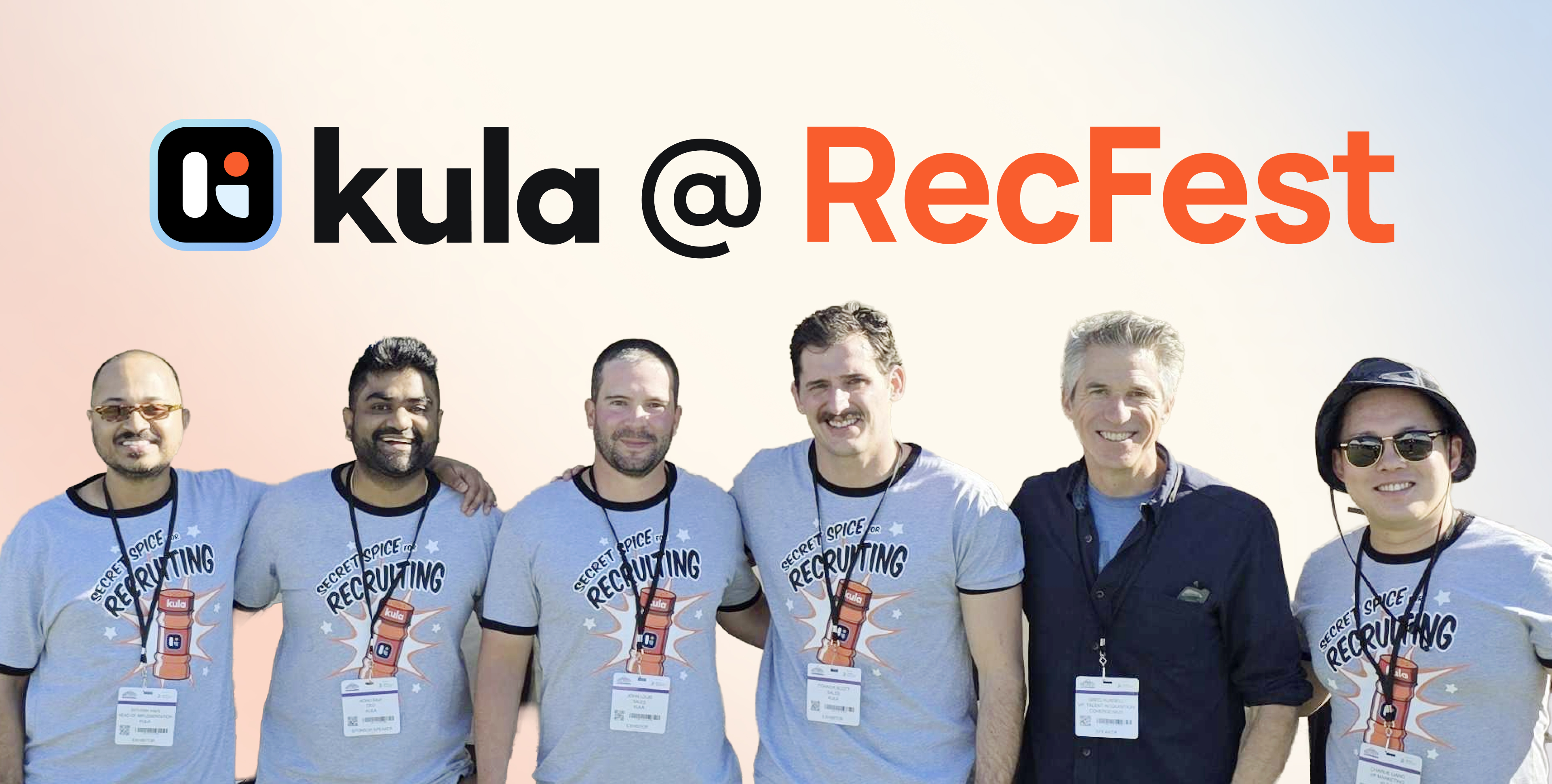Book a 30-minute demo and learn how Kula can help you hire faster and smarter with AI and automation
Creating a workspace that mirrors the diverse world we live in is no longer a nice-to-have; it’s a must-have for companies aiming to stay relevant and innovative. Enter the world of Equal Employment Opportunity (EEO) recruitment, selection, and hiring guidelines. These aren't just rules to follow; they're a blueprint for building a team as varied and vibrant as the market you serve.
In the following sections, we'll dive deep into strategies for promoting EEO in the recruitment process to not only enhance diversity and inclusion but also enrich your company culture and your bottom line. From crafting job listings to making the final hiring decision, every step offers a chance to widen the gate and welcome talents of all backgrounds.
Understanding Equal Employment Opportunity
Definition and Importance
Equal Employment Opportunity (EEO) refers to the fair treatment of all individuals in the workplace, regardless of race, colour, religion, sex, national origin, age, disability, or genetic information. It's about eliminating barriers and ensuring everyone has a fair shot at employment opportunities and advancements based on merit, not on arbitrary or discriminatory factors.
But why is it so critical?
First and foremost, EEO fosters a diverse and inclusive environment that reflects the world we live in today. A mix of perspectives and backgrounds leads to better decision-making, creativity, and problem-solving within teams. Moreover, it's not just the right thing to do ethically; it's beneficial for business too. Organisations that prioritise EEO tend to outperform their counterparts by attracting top talent, improving employee satisfaction, and enhancing their reputation.
EEO also plays a significant role in compliance with federal and state laws. Discrimination in hiring and employment practices can lead to costly legal battles, financial penalties, and damage to an organisation's brand. Thus, understanding and implementing EEO principles isn't just about fostering a positive work environment—it's also about safeguarding the organisation against potential legal and financial pitfalls.
Recruitment Guidelines for Equal Employment Opportunity
Ensuring equal employment opportunity doesn't start on an employee's first day; it begins with the recruitment process. By adopting EEO-friendly recruitment guidelines, organisations can lay the groundwork for a diverse and inclusive workforce. Let's dive into some strategies that can help.
Creating Inclusive Job Descriptions
Crafting inclusive job descriptions is the first step toward attracting a diverse pool of applicants. Here are a few pointers to keep in mind:
- Focus on Essential Qualifications: Clearly define the must-have skills and experience for the job, avoiding any unnecessary requirements that could inadvertently discourage diverse applicants. For instance, reconsider if a bachelor's degree is truly essential or if equivalent work experience could suffice.
- Use Gender-Neutral Language: Words matter. Opt for terms like "salesperson" instead of "salesman" and make an effort to use "they/them" pronouns to avoid bias.
- Highlight Your Commitment to Diversity: Make it clear that your organisation values and practices diversity and inclusion. Mention any relevant policies, programs, or achievements that underscore this commitment.
- Provide Equal Opportunity Employer Statement: Lastly, include an EEO statement at the end of the job description, reaffirming your organisation's dedication to fair hiring practices.
Unbiased Recruitment Strategies
The recruitment process is riddled with potential biases, both conscious and unconscious. Here are strategies to minimise bias and promote EEO:
- Diversify Recruitment Channels: Don't just post your job openings in the usual places. Expand your reach by using diverse job boards, attending career fairs at minority-serving institutions, and leveraging social media platforms to engage with a broader audience.
- Implement Blind Hiring Practices: Consider anonymizing resumes and applications to focus purely on qualifications and experience. By removing details like names, photos, and educational institutions, you reduce the chance of biases influencing the screening process.
- Structured Interviews: Use a consistent set of questions for all candidates to ensure everyone is evaluated on the same criteria. This approach helps limit the influence of personal biases and focuses the assessment on the candidate's abilities and fit for the role.
- Incorporate Diverse Interview Panels: Having a diverse group of individuals conduct interviews can provide varied perspectives and help counteract individual biases. It also signals to candidates that your organisation values diversity.
- Provide Bias Awareness Training: Educate your hiring team on the types of biases that can affect recruitment and how to mitigate them. Awareness is the first step toward change.
Incorporating these guidelines into your recruitment process isn't just about ticking boxes for compliance; it's about genuinely committing to diversity and inclusion from the ground up.
The most successful DEI initiatives don’t stop at recruitment, either — they apply to every level of the company, from junior and intern positions right through to senior leadership and key stakeholders. Diversity in governance — that is, at the very top of the company — ensures the values of inclusivity and representation are embedded in decision-making processes and strategic planning.
By doing so, organisations not only enrich their work environment but also secure a competitive edge in today's dynamic and diverse global market.
This content spans over the intricate details of ensuring equal employment opportunity from understanding its definition and importance to laying down actionable recruitment guidelines.
Crafting inclusive job descriptions and adopting unbiased recruitment strategies are pivotal steps towards achieving a workforce that is reflective of our society's diversity. These principles not only comply with legal standards but significantly contribute to a more innovative and inclusive workplace.
Selection Process for Equal Employment Opportunity
Creating a fair and equitable selection process is a cornerstone of equal employment opportunity. Two key strategies can significantly impact how candidates are evaluated: implementing blind auditions and assembling diverse interview panels. Both approaches aim to minimise biases—conscious or unconscious—ensuring that the focus remains squarely on the qualifications and potential of the candidates.
Implementing Blind Auditions
Blind auditions, a term borrowed from the world of orchestra auditions, involve evaluating candidates without any identifying information that could influence the selection process. This method has been adapted for the corporate environment, where resumes are stripped of names, genders, ages, and other personal details that could lead to biassed assessments.
Instead, hiring managers and recruiters focus on the skills, experience, and competencies relevant to the job. This approach helps level the playing field, ensuring that talents and abilities are the primary criteria for advancement in the hiring process.
Diverse Interview Panels
Another effective strategy to promote equal employment opportunity in the selection process is to assemble interview panels that reflect diversity in terms of race, gender, age, and professional backgrounds. Diverse panels are more likely to provide varied perspectives and are less prone to collective biases.
This not only enhances the fairness of the selection process but also demonstrates the organisation's commitment to diversity and inclusion to potential employees. Such practices contribute to a more dynamic and inclusive workplace culture, encouraging candidates from all walks of life to apply and thrive within the company.
Hiring Practices to Promote Diversity
Adopting inclusive hiring practices is essential for organisations aiming to enhance workplace diversity. Diversity brings myriad benefits, including increased innovation, better decision-making, and improved performance. To achieve these advantages, businesses must prioritise diversity in their talent acquisition strategies.
Value of Diversity in the Workplace
Diversity in the workplace is not just a moral imperative; it's a competitive advantage. A diverse workforce brings a variety of perspectives, experiences, and skills, driving creativity and innovation. Studies have shown that companies with diverse teams are more likely to outperform their less diverse counterparts financially. Furthermore, a commitment to diversity can enhance an organisation's reputation, making it more attractive to top talent and prospective clients who value inclusivity and social responsibility.
Training for Inclusive Hiring Decisions
Training hiring managers and recruiters on the importance of diversity and how to make inclusive hiring decisions is crucial. Such training should cover topics like unconscious bias—how it affects decision-making and strategies to mitigate it. Role-playing scenarios, group discussions, and case studies can be effective methods to engage participants and foster a deeper understanding of inclusive hiring practices.
Additionally, implementing standard evaluation criteria for all candidates can help ensure that personal biases do not influence hiring decisions. Regularly reviewing and updating training programs is necessary to address emerging challenges and reinforce the organisation's commitment to equal employment opportunities.
Building a Diverse Talent Pipeline
Creating a pipeline of diverse talent is an ongoing effort that requires strategic planning and commitment. Here are some effective strategies for building such a pipeline:
- Partnering with diverse professional organisations, colleges, and community groups can help reach underrepresented candidates.
- Offering internships and scholarships to students from diverse backgrounds can nurture early interest in the company.
- Leveraging social media and employment platforms to highlight the organisation's commitment to diversity and inclusion can attract a broader pool of candidates.
- Implementing employee referral programs that incentivize the referral of diverse candidates can also contribute to a more varied applicant pool.
In conclusion, fostering equal employment opportunity through thoughtful recruitment, selection, and hiring practices is essential for organisations aiming to create a diverse and inclusive workplace. Implementing blind auditions and diverse interview panels can help minimise biases in the selection process, while understanding the value of diversity, providing training on inclusive hiring decisions, and building a diverse talent pipeline are critical for achieving and maintaining workplace diversity.
These efforts not only contribute to a fairer and more equitable workplace but also enhance the organisation's ability to innovate, solve problems, and connect with a wide range of customers.
Conclusion
In wrapping up, mastering equal employment opportunity (EEO) in recruitment, selection, and hiring not only meets legal requirements but also enriches your organisation with a tapestry of perspectives, cultivating an inclusive environment where everyone feels valued and respected. Implementing the strategies discussed—such as standardised job postings, holistic candidate evaluation, and continuous training on bias—is pivotal for enhancing diversity and fostering an inclusive workplace.
Remember, diversity isn’t just about filling quotas; it's about recognizing and valuing the unique contributions every individual brings to the table, ultimately driving innovation and growth within your company. Let's challenge ourselves to view hiring practices as a powerful tool for change, embodying the principles of fairness, equality, and respect in every action we take.
Together, we can make strides towards a more diverse and inclusive future.






















